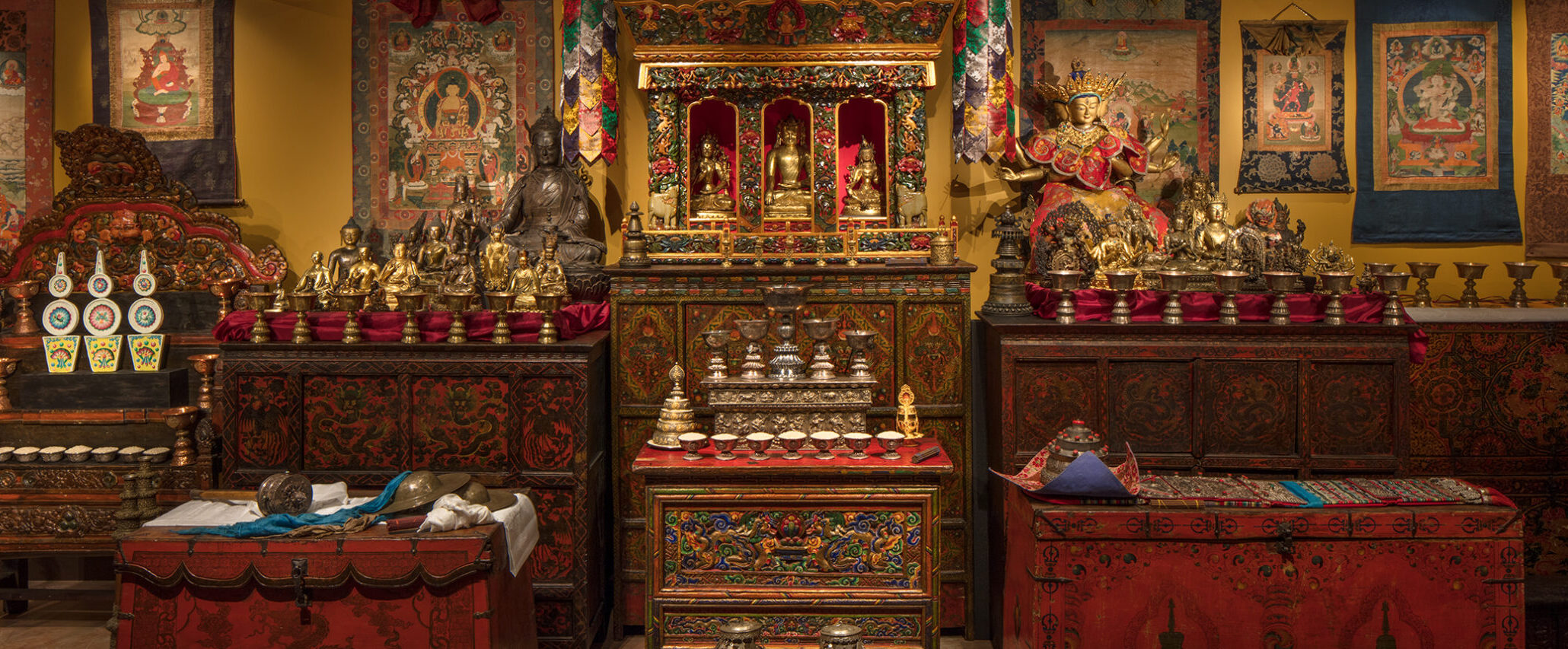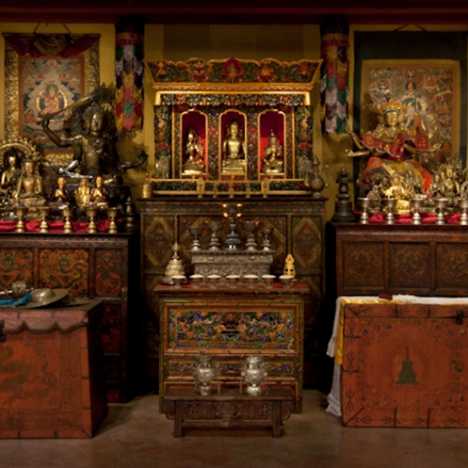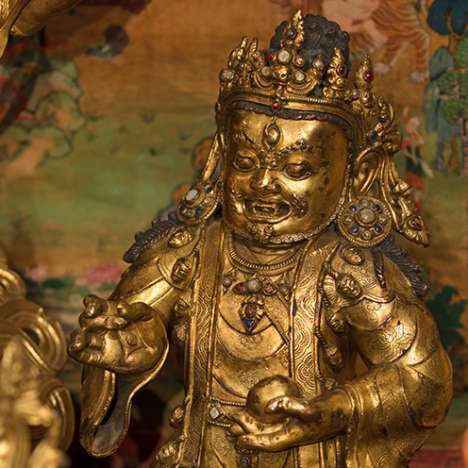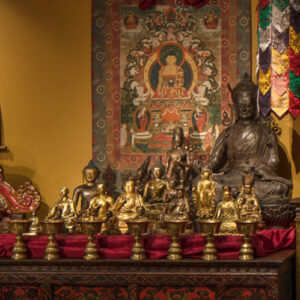
Since it first opened, the Tibetan Buddhist Shrine Room has been one of the most popular installations at the Rubin Museum, providing an immersive experience inspired by a traditional shrine.
Art and ritual objects are displayed as they would in an elaborate private household shrine, a space used for offerings, devotional prayer, rituals, and contemplation. The design of the Shrine Room showcases these objects while incorporating elements of traditional Tibetan architecture and the color schemes of Tibetan homes.
For Museum visitors, this richly detailed, immersive installation provides an oasis for peaceful contemplation at the heart of the Rubin Museum.
Inside the Shrine Room
Scroll paintings known as thangkas, sculptures, ritual items, and musical instruments are arranged on traditional Tibetan furniture according to the hierarchy they assume in Tibetan Buddhist practices. The objects, such as vajras and bells, offering bowls, pitchers, and ritual mandalas are used in daily rituals and offerings along with handheld drums, conch trumpets, horns, and reeds. Ornamental textile decorations of brocade silk, made by traditional masters of appliqué craft, hung from the ceiling and on pillars, are also an integral part of a traditional shine room’s adornment. The Rubin’s Shrine Room is complete with simulated flickering butter lamps, recordings of Tibetan monks and nuns chanting prayers, and the subtle smell of incense, which is used during religious practices.
The Kagyu Tradition Shrine Room
The installation rotates every two years to highlight each of the four major Tibetan religious traditions. This rendition features the Kagyu tradition and includes images of buddhas, bodhisattvas, tantric deities, protectors, and teacher portraits specific to the branches of this tradition. Among the most famous teachers of the Kagyu tradition are the renowned translator and teacher Marpa, his legendary disciple and yogi Milarepa, and the lamas, or teachers, of the first reincarnation lineage in Tibetan Buddhism, known as Karmapas. Some of the main practices of this tradition focus on the tantric deities Vajrayogini and Chakrasamvara and the fierce protector deity Mahakala.
The installation is accompanied by an interactive touch screen with a virtual tour of the Shrine Room. The tour features select paintings, sculptures, and ritual items on loan to the Museum as well as objects from the Rubin Museum’s collection that focus on the Kagyu tradition’s deities, teachers, and related practices.
Curated by Elena Pakhoutova
Quotes from Rubin Visitors
“I love to stop in and sit by the Shrine Room, even if it’s just for 15 minutes.”
“The Shrine Room sets the stage for quiet contemplation of the rest of the Museum.”
“Stepping into the Shrine Room is a moment to reconnect to our inner selves and remember our humanity.”
“Coming in from the New York City streets, it is a space to slow down and possibly even set an intention before looking closely and thoughtfully at Museum objects.”
The Shrine Room is supported by The Robert H. N. Ho Family Foundation, Namita and Arun Saraf, and by generous donations from the Museum’s Board of Trustees, individual donors, and members.

Plan your visit
Location, Hours, and Admission
From January 25–March 10 we will be installing our next exhibition Reimagine: Himalayan Art Now. Due to this work in the galleries, the Tibetan Buddhist Shrine Room will not be wheelchair accessible and will only be accessible via stairway. We apologize for the inconvenience!




